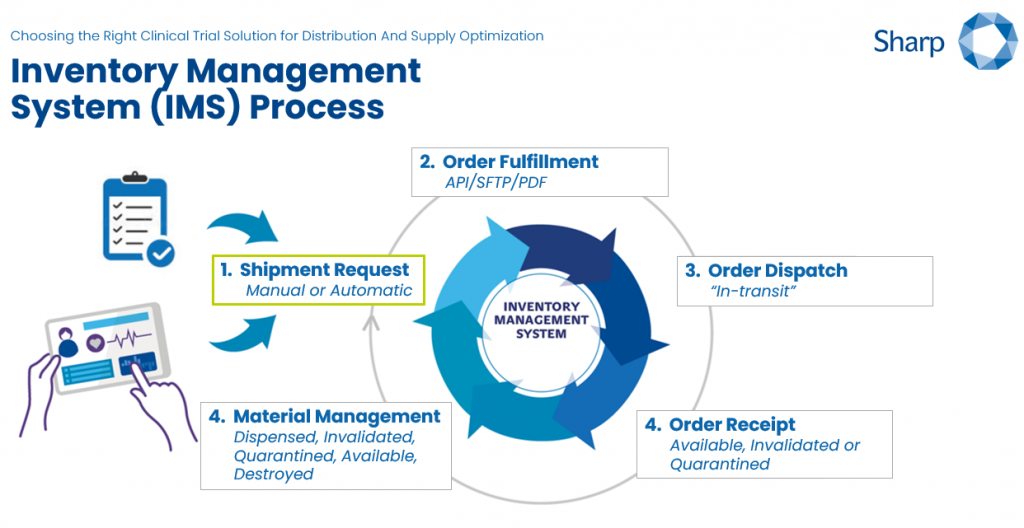What are the benefits of an Inventory Management System (IMS), such a Clinventory?
While an IRT solution involves the management of patients, an IMS has a different focus, in that it is designed to provide full visibility over inventory levels at each investigation site and actively track products through the supply chain ensuring a comprehensive view of the trial in real-time. Just like the IRT software, an IMS allows for digital navigation of all the tools necessary to manage the clinical trial’s drug supply and the automation of manual tasks, saving users time, labor force, budget and reducing the risk of human error.
An IMS offers many beneficial tools to facilitate efficiency and momentum in a trial. Many components in IMS can be customized to best fit a trial. For example, automatic resupply can be updated as study enrollment increases or decreases, and supply lows can be customized at individual levels to trigger a shipment. Site information is uploaded into a cloud-based inventory system which gives project managers across all sites access to critical information such as supply levels, temperature excursion monitoring, return tracking and reconciliation. Notifications can also be enabled to trigger email and SMS alerts on events such as low inventory at site or depot, temperature excursions or expiration warnings. These notifications can give project managers the opportunity to prevent events from occurring rather than reacting hours or days later.
Clinventory provides full visibility over inventory levels at each investigation site and actively track products through the supply chain ensuring a comprehensive view of the trial in real-time.
What should you consider when selecting an IMS solution?
Once you decide an IMS is the best choice for a particular clinical trial, the next step is choosing IMS software. There are a few things to consider when making this decision.
An inventory management solution provider should be experienced and have a strong track record of success. They should also have an established project management team that shows a willingness to be hands-on throughout the project lifecycle and will provide a finalized protocol synopsis draft as early in the process as possible. Above all, early engagement of the provider is key when selecting an IMS for distribution and supply optimization. When the provider does not get involved early on in the process, they do not have the opportunity to catch glitches, advise on possible challenges and make necessary changes that will be imperative to the project life cycle.
Another reason to engage early is to ensure timelines can be met. Trial partners need to be able to control timelines as agreed but also show flexibility in adapting them as the circumstances of the trial change. This is another reason it is extremely important to share all key specifications and data points from a protocol as early as possible to a provider.
Finally, communicating budgetary expectations to prospective partners is not only important in getting those expectations met, but it is also important to understand how the provider will react if a trial takes a different course over time. A good partner will be able to work through a quotation process easily and efficiently.

